Review| Cars 3
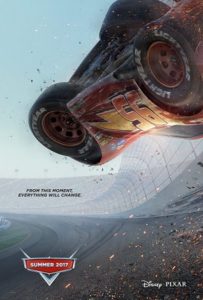 NASCAR is currently at a crossroads. Declining attendance has plagued all of its top series for many consecutive years. The race cars have gone from looking stock (as in, right out of the dealer showroom) to anything but stock. New rules and features have been introduced into the sport to keep things exciting for crowds with shorter attention spans but to seemingly no avail. The premier Cup series lost their main sponsor, Sprint, after 13 years, and could only agree upon a two-year contract with Monster Energy to fill the gap. Most importantly, there’s a changing of the guard taking place. Veteran drivers such as Tony Stewart Jeff Gordon, and Carl Edwards have already retired within the past year, and Dale Earnhardt Jr., a majority favorite, announced months ago that the 2017 season would be his last full-time tour with NASCAR. Many more are likely to follow – all for their own reasons, and not just because of the series’ overall decline. But there’s a new crop of drivers coming up, too – rookies that know how to drive a car fast and consistently beat the veterans to the finish line every race weekend. Some of them even share blood and a last name with champions of the past. While some may see this seemingly abrupt transition as a sign of the end of the series, it’s clear that this is just the start of a new lap in NASCAR’s 69-year history.
NASCAR is currently at a crossroads. Declining attendance has plagued all of its top series for many consecutive years. The race cars have gone from looking stock (as in, right out of the dealer showroom) to anything but stock. New rules and features have been introduced into the sport to keep things exciting for crowds with shorter attention spans but to seemingly no avail. The premier Cup series lost their main sponsor, Sprint, after 13 years, and could only agree upon a two-year contract with Monster Energy to fill the gap. Most importantly, there’s a changing of the guard taking place. Veteran drivers such as Tony Stewart Jeff Gordon, and Carl Edwards have already retired within the past year, and Dale Earnhardt Jr., a majority favorite, announced months ago that the 2017 season would be his last full-time tour with NASCAR. Many more are likely to follow – all for their own reasons, and not just because of the series’ overall decline. But there’s a new crop of drivers coming up, too – rookies that know how to drive a car fast and consistently beat the veterans to the finish line every race weekend. Some of them even share blood and a last name with champions of the past. While some may see this seemingly abrupt transition as a sign of the end of the series, it’s clear that this is just the start of a new lap in NASCAR’s 69-year history.
The third and possibly final installment to the Cars franchise comes at a very appropriate time for its subject material. Refusing to even refer to the second film (Cars 2), Pixar decided to go back to the basics of what made the original Cars exciting and different in the first place – speedways and the thrill of American motorsports, which is something that not many films tackle. Before Cars 3, there hasn’t been a movie as dedicated to NASCAR since Tony Scott’s 1990 Tom Cruise-fronted action film, Days of Thunder. While the majority of America has largely forgotten the rich history of the moonshine-running foundation of stock-car racing and depressingly reduces the sport of NASCAR to simply “cars making left turns,” Cars 3 does an impressive job of crafting a tribute to NASCAR’s history while also serving as a bridge to newer generations. If anything, the film could be taken as one big advertisement for NASCAR and American motorsports. But for the person who doesn’t care for motorsports, what does the film offer that all audiences can draft behind?
 Cars 3 is the story of Lighting McQueen (still voiced by Owen Wilson), the lead character of the Cars franchise, who is now facing his impending retirement. Like many before him, he doesn’t want to stop doing what he loves. He can still race, he’s still fast, and he’s still got fans in the stands that support him – including members of the younger generation. But his age is starting to show, and the new breed of cars – high tech machines with more powerful engines, lighter construction, and sleeker bodies – are leaving him in the dust. A vicious crash at the end of a race season leaves McQueen’s career in significant doubt. After his sponsor and team is sold to a new owner (Sterling, voiced by Nathan Fillion) – McQueen makes an agreement with his new boss – if McQueen can win the big race in Florida next year (the equivalent of the Daytona 500), he will end his career on his own terms. But if McQueen doesn’t win, he’ll follow the advice of Sterling and bow out, reaping the benefits of his own established brand.
Cars 3 is the story of Lighting McQueen (still voiced by Owen Wilson), the lead character of the Cars franchise, who is now facing his impending retirement. Like many before him, he doesn’t want to stop doing what he loves. He can still race, he’s still fast, and he’s still got fans in the stands that support him – including members of the younger generation. But his age is starting to show, and the new breed of cars – high tech machines with more powerful engines, lighter construction, and sleeker bodies – are leaving him in the dust. A vicious crash at the end of a race season leaves McQueen’s career in significant doubt. After his sponsor and team is sold to a new owner (Sterling, voiced by Nathan Fillion) – McQueen makes an agreement with his new boss – if McQueen can win the big race in Florida next year (the equivalent of the Daytona 500), he will end his career on his own terms. But if McQueen doesn’t win, he’ll follow the advice of Sterling and bow out, reaping the benefits of his own established brand.
This isn’t too far off the mark from what’s happening with NASCAR’s older generation of drivers. Dale Earnhardt Jr. announced his retirement by saying he chose the 2017 season to be his last because he wants “to go out on my own terms.” Earnhardt Jr. has a history of bad crashes that have given him enough concussions to make him rethink his own health, especially now that he has recently married his longtime girlfriend and a future family together to consider. Carl Edwards’ reasons were similar – he wanted to devote time to the people that are important to him (namely, his family), while also stating that he can “stand here healthy” – meaning that this decision isn’t based on injury (even though his last race – and championship hopes – ended in a terrible crash), but on contemplation. Jeff Gordon and Tony Stewart also offered similar reasons. However, none of them have any intention of leaving the sport for good. “Junior” will surely find work in the broadcast booth while being a mentor to many with his own race team. Edwards has mentored rookie Daniel Suarez (who guest-features in Cars 3 as a voice of one of the new hotshot drivers). Jeff Gordon works in the broadcast booth and has also mentored newcomer Chase Elliott (also guesting in Cars 3). Tony Stewart owns a NASCAR team while still enjoying racing on the dirt tracks he began his career on.
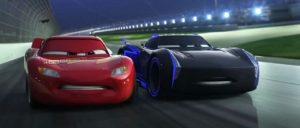 In Cars 3, Lightning McQueen is going through the same motions, and when you think of the time it takes for Pixar to make a film of this caliber, it makes this movie eerily prophetic considering NASCAR’s current state of affairs. While he’s training for what may be his last race, McQueen builds an understanding friendship with his young trainer (Cruz Ramirez), who once had dreams of becoming a top-tier racer like McQueen. As his training goes along, he slowly begins to recognize the benefit and importance of passing along the torch, taking a cue from his former mentor, Doc Hudson (voiced by the late Paul Newman), while recognizing the skill and spirit of others around him – namely, Ramirez.
In Cars 3, Lightning McQueen is going through the same motions, and when you think of the time it takes for Pixar to make a film of this caliber, it makes this movie eerily prophetic considering NASCAR’s current state of affairs. While he’s training for what may be his last race, McQueen builds an understanding friendship with his young trainer (Cruz Ramirez), who once had dreams of becoming a top-tier racer like McQueen. As his training goes along, he slowly begins to recognize the benefit and importance of passing along the torch, taking a cue from his former mentor, Doc Hudson (voiced by the late Paul Newman), while recognizing the skill and spirit of others around him – namely, Ramirez.
Being a racing fan, I love how the Bible uses racing imagery to describe the Christian life. Hebrews 12:1 begins by talking about how we should focus on Jesus’ example, stating, “Therefore, since we have so great a cloud of witnesses surrounding us, let us also lay aside every encumbrance and the sin which so easily entangles us, and let us run with endurance the race that is set before us…” The writer of Hebrews uses the imagery of the footraces which were run in ancient Greece, Israel, and the colosseums of Rome to illustrate his point, which we can easily substitute for the imagery we see at the racetrack. The race being referred to, however, is the Christian life. Like many motorsports events, the life of the Christian is long and full of trials, and is one of endurance – not a mad dash. We’re called to stay the course, no matter the obstacles and challenges, and remain faithful to the end. In 2 Timothy 4:7, Paul uses this same imagery at the end of his days: “I have fought the good fight, I have finished the race, I have kept the faith.”
The race that is set before all believers is a track which only God knows the layout. We run the race not for man-made trophies and temporary glory, but for something more – life with Christ. And as we run, we set Christ – who has already finished the race and was crowned champion – as our example. In the same manner as Doc Hudson served for Lightning McQueen, Cruz Ramirez set McQueen as her example from an early age. And in  the real realm of American auto racing, NASCAR’s current roster of young drivers all have racing champions who inspired them to first put on the helmet and eventually pick up the torch that has been left for them to carry. Everyone has an example that they follow, and as our respective races are run and we take our laps around this so-called circle of life, someone else is bound to pick up from where we left off. In the case of Cars 3, the torch has been successfully passed, as the film serves as a perfect bookend conclusion to the admittedly-uneven series. While we may retire from our vocations, we should never retire from serving. Just as McQueen returns to serve the next generation as Hudson did with him, the Christian should never retire from serving the Lord and His Kingdom, even though the way we serve may change form as our own form changes and adapts with the times.
the real realm of American auto racing, NASCAR’s current roster of young drivers all have racing champions who inspired them to first put on the helmet and eventually pick up the torch that has been left for them to carry. Everyone has an example that they follow, and as our respective races are run and we take our laps around this so-called circle of life, someone else is bound to pick up from where we left off. In the case of Cars 3, the torch has been successfully passed, as the film serves as a perfect bookend conclusion to the admittedly-uneven series. While we may retire from our vocations, we should never retire from serving. Just as McQueen returns to serve the next generation as Hudson did with him, the Christian should never retire from serving the Lord and His Kingdom, even though the way we serve may change form as our own form changes and adapts with the times.


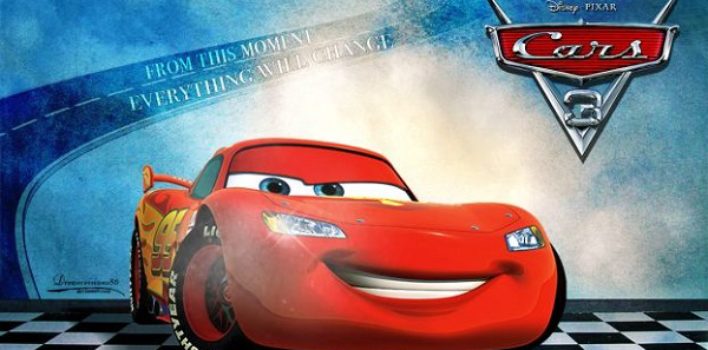
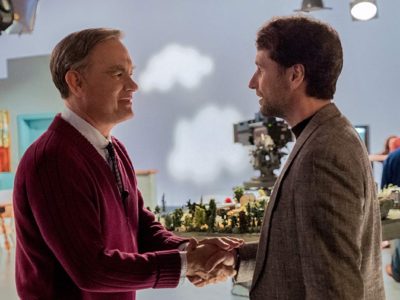

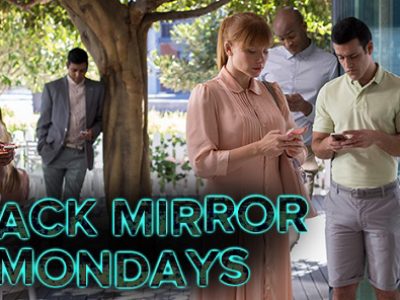


Pingback: #138 – Cars 3 and Relational Discipleship | Reel World Theology